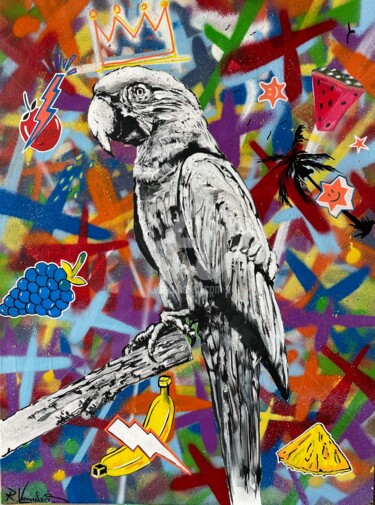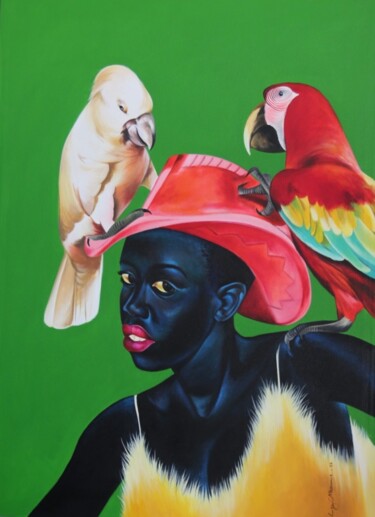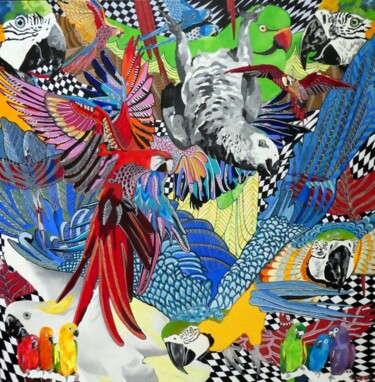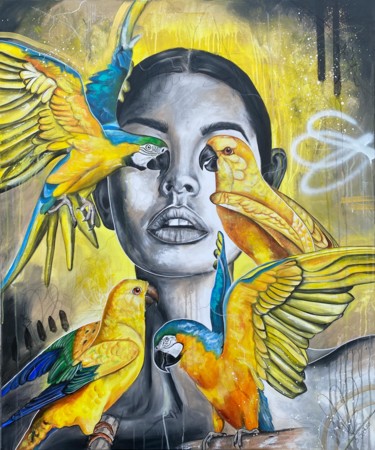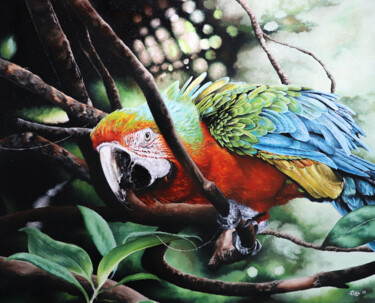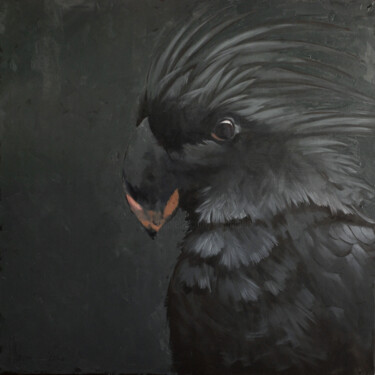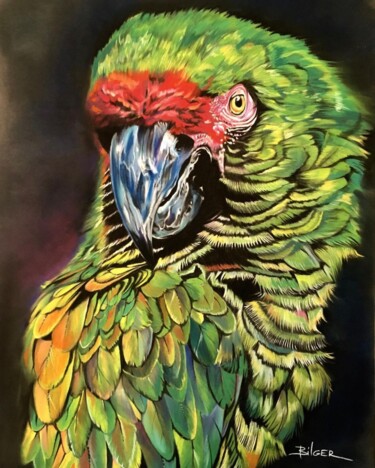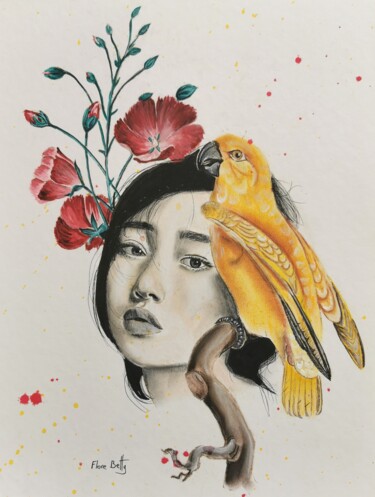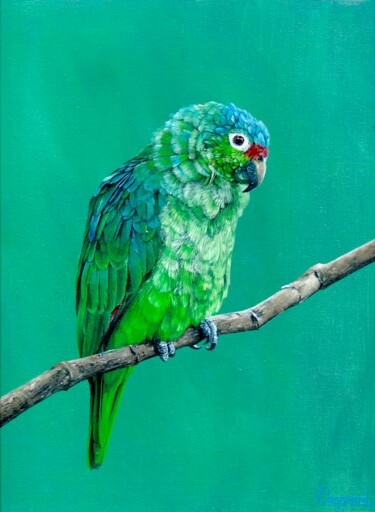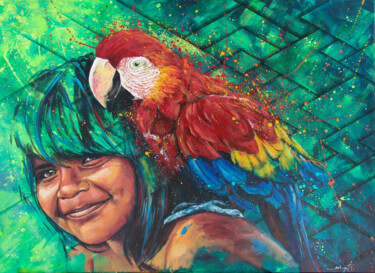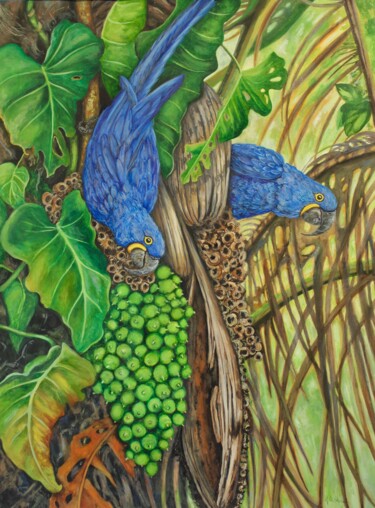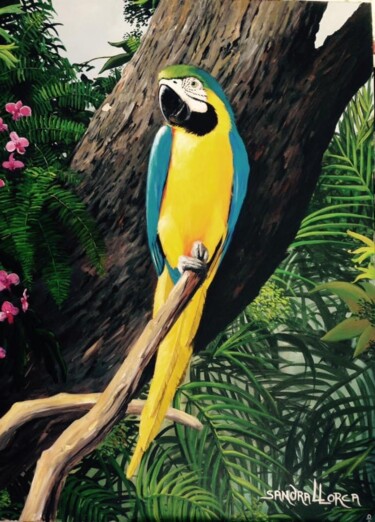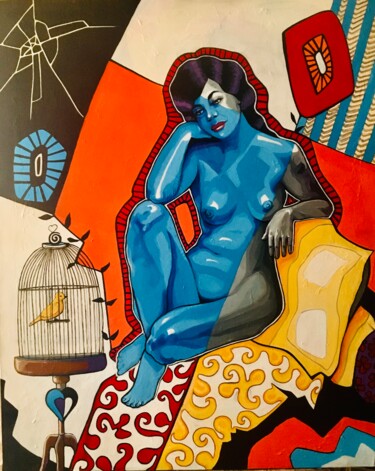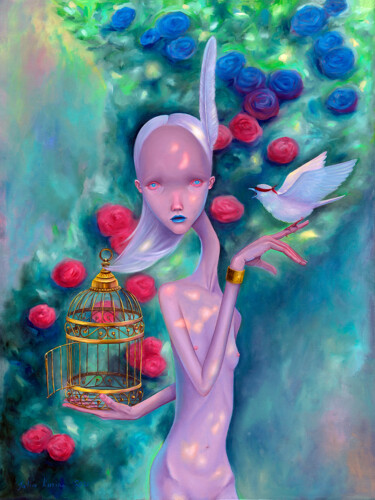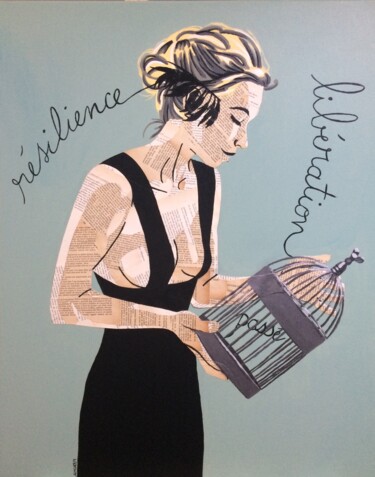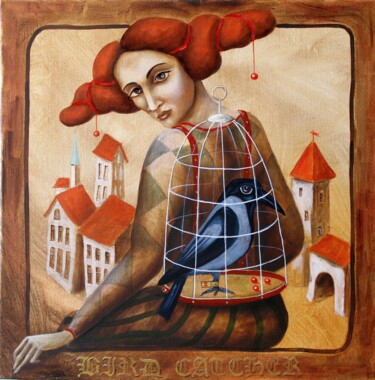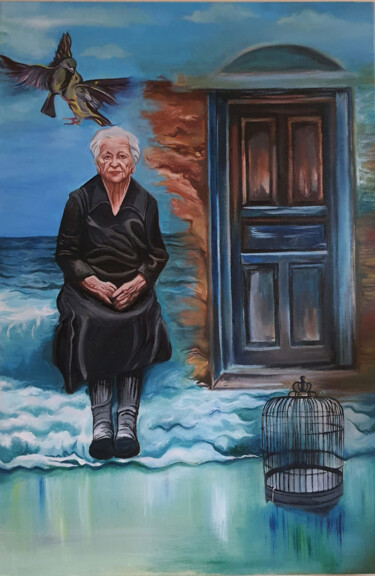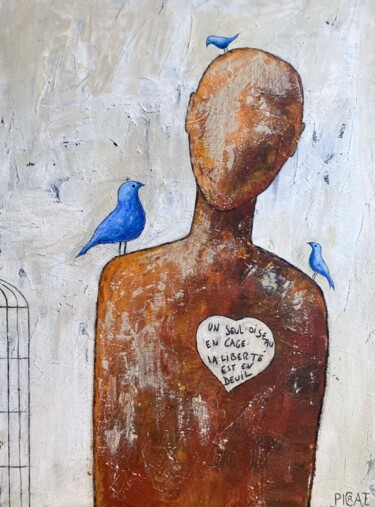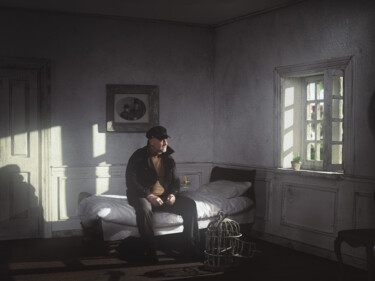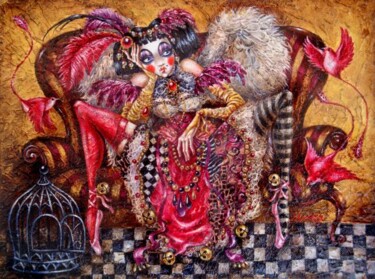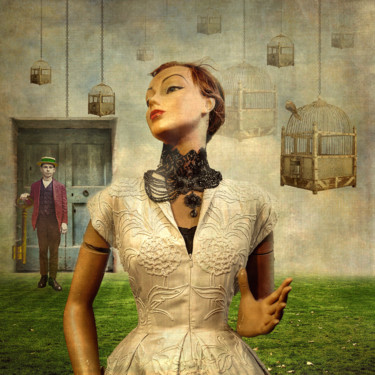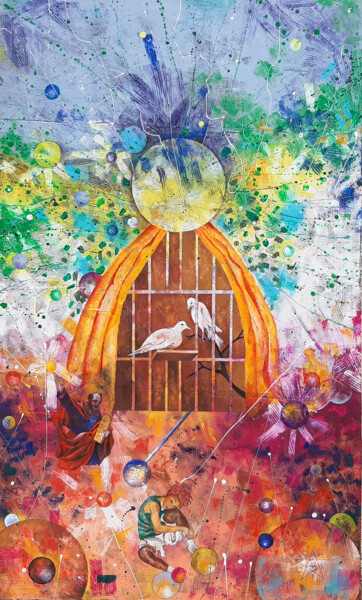Dürer, Marian parrots and the nude
Rather than listing masterpieces aimed at immortalizing parrots, I want to contextualize the subject of my discussion through the figure of the German Renaissance master Albrecht Dürer, a painter and engraver known for his production of studies of plants and animals, which, apart from their astonishing realism, to say the least, should not surprise us further, as nature was a source of interest for artists as early as the 14th century. In fact, such studies spread to the north-central Italy of Giovannino de' Grassi and, later, Pisanello, as well as to Flanders and Germany itself, where Hans Pleydenwurff and Martin Schongauer worked. Dürer, formed in the reflection of the latter tradition, added to the work of his predecessors a new sense of scientificity, a characteristic that had pervaded the sixteenth-century historiography of the period of discoveries, in order to question the authority of the great written tradition, to explore the universe with his own senses, as well as on the basis of mathematical rules and certainties. The personality of the master of Nuremberg, plagiarized by the above, was governed by a strong curiosity for the natural datum, so much so that his work can be likened to that of Leonardo da Vinci, an artist who understood art as a means of investigating nature. It is well to emphasize how these two geniuses, in comparison with the mediaeval tradition, did not intend their studies only to give rise to great repertories, which were to be used to generate pictorial motifs, nor was their intention specifically to collect the symbolic and allegorical characteristics of animals, or to give rise to zoological treatises dependent on classical proto-scientific sources, as they also strove to study the peculiar characteristics of creation. The latter intentions are evident in some of Dürer's watercolors, just as in the one depicting the Hare (1502), or the one immortalizing the Little Owl (1506). Nevertheless, it is necessary to point out how the Nuremberg master did not totally forget the tradition that preceded him, a fact that can be seen in the figure of the parrot, which is present, with related symbolic meanings, within his engraving of Adam and Eve of 1504, a masterpiece aimed at immortalizing the protagonists of original sin through the use of various metaphorical animals, aimed at transforming the way in which the well-known effigies were popularly represented in art.
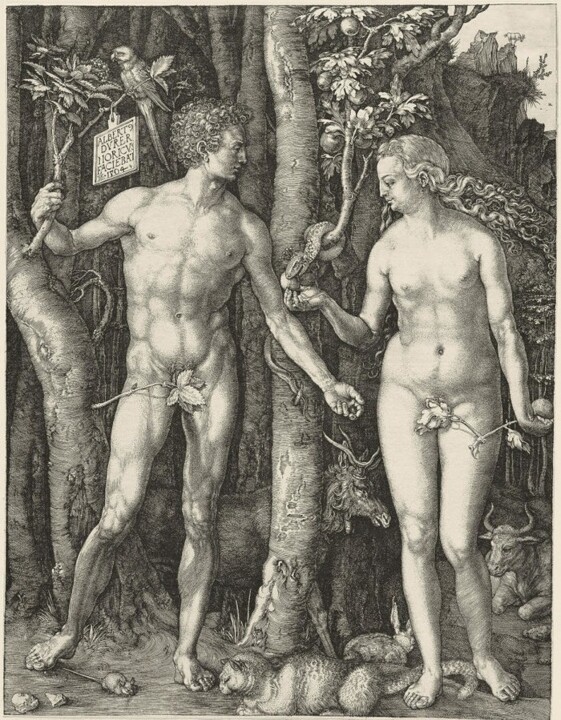 Albrecht Dürer, Adam and Eve (1504). Engraving. New York: MET.
Albrecht Dürer, Adam and Eve (1504). Engraving. New York: MET.
 Gustave Courbet, Woman with a Parrot (1866). Oil on canvas, 129.5×195.6 cm. New York: MET.
Gustave Courbet, Woman with a Parrot (1866). Oil on canvas, 129.5×195.6 cm. New York: MET.
Describing the work, the engraving depicts Adam and Eve before the fall of man, emphasizing the physical beauty of the figures rather than the depiction of sin, well summarized by the woman's gesture of grasping the forbidden fruit with her left demonic hand. Regarding instead our subject of interest, the parrot, placed on a branch, which is located just above the cartouche, hosting the work's execution claim, signature and date, could symbolize several ideas, including: wisdom, the Word of God, Christ, eternal life and paradise, as well as referring to the New World, as at the time the colonization of America was in full swing and some subjects from the Americas came to symbolize paradise, as Europeans had come to believe that the latter would be found in the New World. To the metaphorical meanings just listed regarding the figure of the parrot are also added Marian ones, as since the Middle Ages such a bird has represented, both the virginal birth, and the greeting of the archangel Gabriel at the moment of the Annunciation, symbolic and feathery "Ave" becoming part of multiple depictions of the Madonna and Child. Such an emblem of communication, innocent and pure, can be found in Dürer's Madonna of the Animals (c. 1503), but also in the work of the master who largely influenced the latter, namely, the aforementioned Martin Schongauer, author of The Madonna and Child and the Parrot (1470-75), an engraving whose composition would seem to be inspired by the figurative investigation of Flemish primitives, such as, for example, Dieric Bouts. Just as found in the latter's work as well, Schongauer wanted to place the Vergie in front of a donore drape, including a window in the wall, intended to open si of a landscape. In this context, the Child finds placement on an ornamental cushion, which seems to cross the boundaries of the support to approach the viewer. In addition, Jesus himself holds a pear in his right hand, a symbolic antidote to deadly poisons, while a parrot, perched on his left hand, would allude to the eternity of life or soul. If until now I have had you convinced that the parrot has represented in art an exclusively sacred symbol, this last part of the story wants to do its best to dispel this last certainty by presenting the example of some works, which, like Eugène Delacroix's Woman Stroking a Parrot (1827), A Young Woman with a Macaw (1696-1770) by Giovanni Battista Tiepolo and Woman with a Parrot (1866) by Gustave Courbet, have provided us with a profane, if not erotic, image of the same animal. Speaking of the last masterpiece listed above, Woman with a Parrot (1866), Courbet's first nude to be accepted at the 1866 Paris Salon, depicts an intimate interior, where the female presence lying on her back is joined by that of a bird, which, in a manner analogous to a sensual seducer, rushes at her, resting on her outstretched left hand. Finally, further approaches to the parrot subject within art history are narrated through the example brought by the figurative investigation of Artmajeur artists such as Ley Mboramwe, Rinalds Vanadzins, and Liuba Zdor.
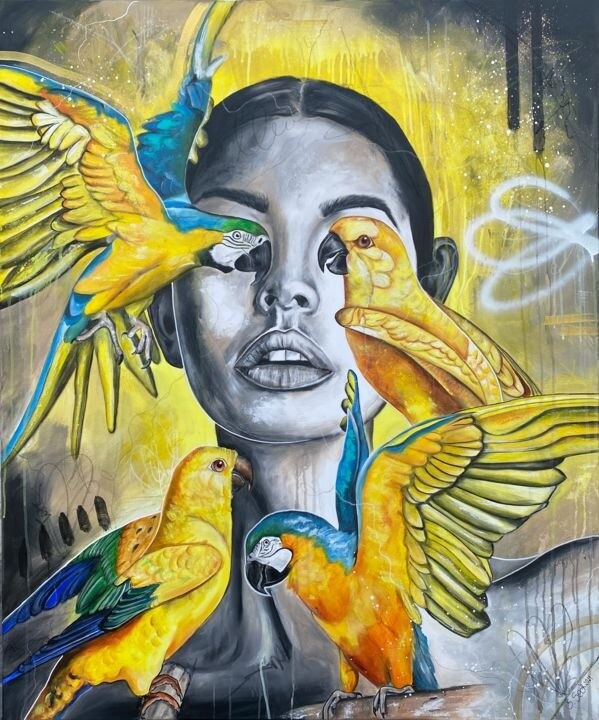 INTO THE NATURE (2021)Painting by Sabrina Seck.
INTO THE NATURE (2021)Painting by Sabrina Seck.
 TROPICAL ABSTRACT PARROT PAINTING, 'AMAZON UTOPIA' (2022)Painting by Lucía Verdejo.
TROPICAL ABSTRACT PARROT PAINTING, 'AMAZON UTOPIA' (2022)Painting by Lucía Verdejo.
PARROT GIRL (2022)Painting by Ley Mboramwe.
Ley Mboramwe: Parrot girl
A woman immortalized with parrots and it's instant Frida Kahlo mania! In fact, the extreme commercial popularity achieved in contemporary times by the latter painter definitely spoiled my viewing of Parrot girl, a painting by Artmajeur artist Mboramwe, which immediately made me think of the masterpiece titled Me and my parrots, a work by the aforementioned Mexican artist, which, dated 1941, shows Frida in traditional Mexican dress, aimed at attracting the viewer's attention, along with the effigy's fixed, outward-facing gaze. In fact, biographers speak of Kahlo's desire to be noticed, in order to externalize the pain that marked her physicality, but also her psyche, given the recent death of her father. It is precisely in this sad context that the parrots, good luck animals, portrayed as a kind of colorful and ruffled protective elements, aimed at bringing a beneficial oasis of calm to the Mexican painter's desolate story, intervene salvifically. At the same time, the aforementioned animals, specimens from the Amazon, allude to the mythological figures of the Amazons, presenting Frida as a proud woman, who, in the difficult time, when the masterpiece was made, also managed her intense love life, marrying for the second time to her beloved Diego. It is precisely this latter feat that makes her free and daring, and thus capable of rewriting the feminine myth and ideal of the time, presenting a revenge of the feminine over the masculine through sentimental emancipation. In contrast, the extreme confidence of the effigy of Parrot girl is instead downplayed by the presence of kindred birds, which, taking the model pose of the well-dressed young woman not very seriously, move unsteadily about her hat, sympathetically attracting attention.
 PARROT'S BLISS (2022)Painting by Rinalds Vanadzins.
PARROT'S BLISS (2022)Painting by Rinalds Vanadzins.
Rinalds Vanadzins: Parrot's bliss
In Vanadzins' Pop composition, comprising abstract components and a friendly parrot, also finds a place in a kind of decomposed still life, aimed at reminding us how the latter genre was often accompanied by the pleasant and colorful presence of the aforementioned animal, just as the iconic and traditional still life of Georg Flegel, but also the more modern and innovative ones of Frida Kahlo and Robert Delaunay demonstrate. Speaking of the latter, the masterpiece in question is Still-life with a Parrot (1907), a painting that is the result of the initial Impressionist influence on the French painter's work, from which he drew his most typical atmospheric treatment of light, to be added to the shrewd attention given to volumes, drawn from the Pont Aven group. These tendencies are reconciled of the painter through the discovery of Neo-Impressionism and the work of Seurat, points of view that give rise to a purely pointillist brushstroke, aimed at affirming the autonomy of color, as well as its ability to generate form in motion. Adding to the above is the admiration for the colorful canvases of the Fauves and the organization in small cubes or tiles of the paintings taken from Matzinger. In this stylistic context, the 1907 masterpiece was realized through the utilization of a strong color palette aimed at optimizing the organic shimmer of colors juxtaposed with their opposites, all done in small rectangular sections of yellow, orange, blue and green on a dominant expanse of yellow-orange.
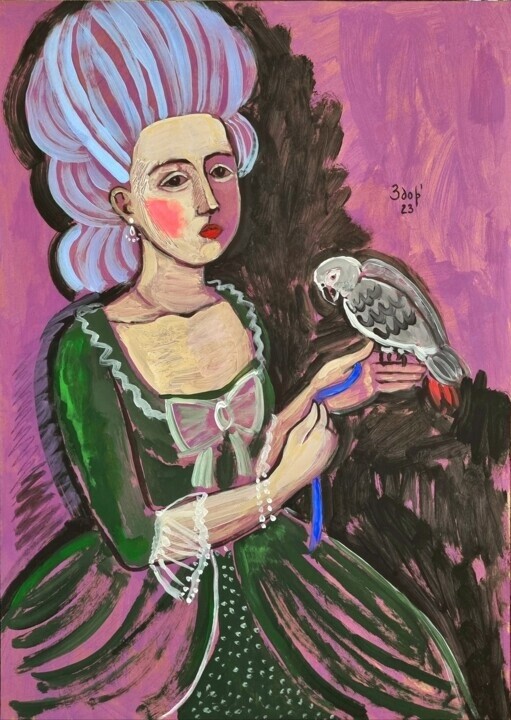 GIRL WITH A GREY PARROT (2023)Painting by Liuba Zdor.
GIRL WITH A GREY PARROT (2023)Painting by Liuba Zdor.
Liuba Zdor: Girl with a Grey parrot
In the examples above we have seen the parrot as the protagonist of still lifes, religious scenes, etc., contexts in which the animal was always, or almost always, the bearer of multiple symbolic meanings. In contrast, the bird, represented as a simple and non-metaphorical pet, is the protagonist of the Artmajeur artist's painting Girl with a grey parrot, a work, which, because of the pair of subjects immortalized, immediately makes me think of A Young Lady in 1866 (1866), an oil by Édouard Manet, which immortalizes Victorine Meurent, i.e., the painter's favorite model, whike, wearing a pink dress, she holds a small bouquet of violets and is accompanied by the presence of an African gray parrot, which lies on a perch. The painting, preserved pesso the MET in New York, is reminiscent, both in its realism and the inclusion of the bird, of Gustave Courbet's more sensual Woman with Parrot, an aforementioned masterpiece dated, also, 1866. Finally, the fact that the parrot appears in these paintings as a domesticated animal made me document how such birds have not actually undergone the process of domestication, i.e., selection by humans designed to regulate and control feeding and reproduction, as, for example, that directed toward dogs, cattle or other livestock. As a result, pet parrot specimens show few generations of difference with those in the wild.

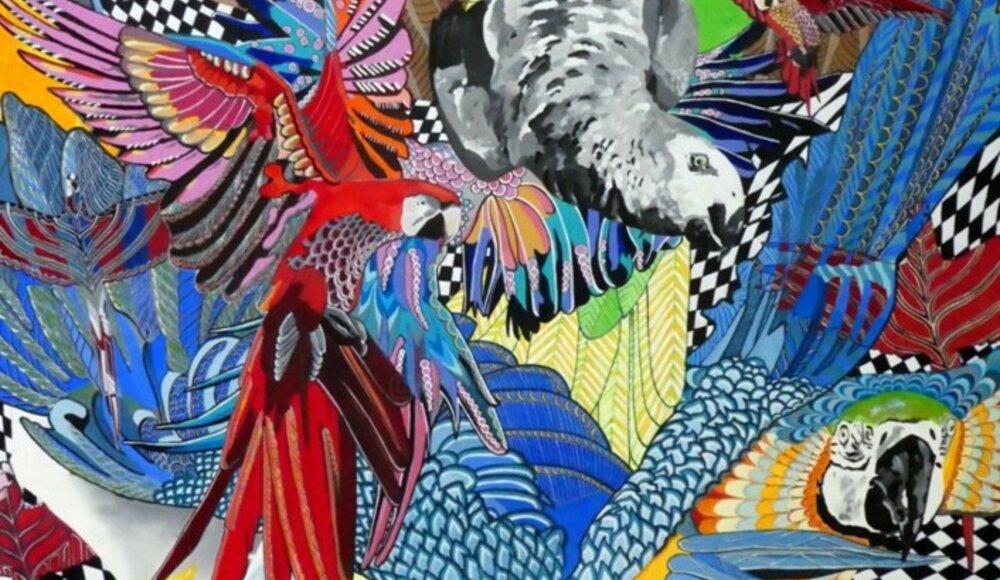


 Olimpia Gaia Martinelli
Olimpia Gaia Martinelli
